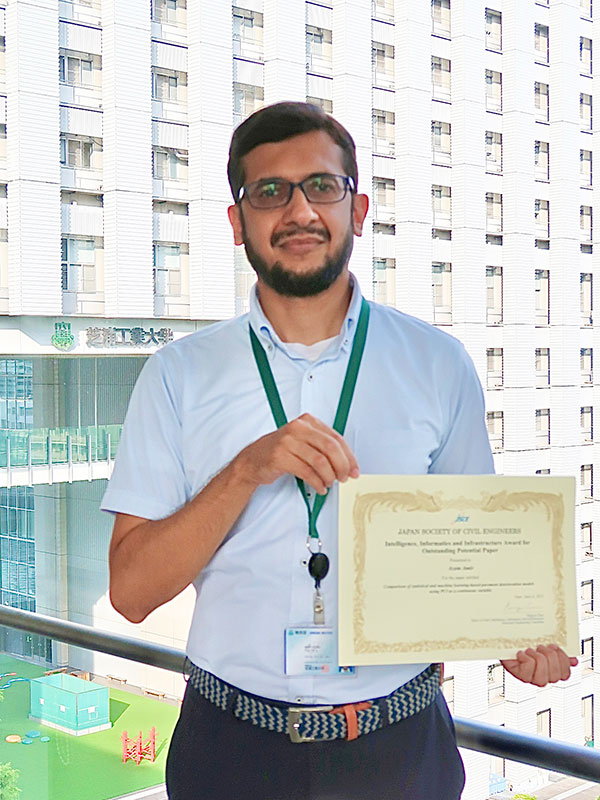Azam Amirさんがデジタルツイン・DXシンポジウムにてIntelligence, Informatics and Infrastructure Award for Outstanding Potential Paperを受賞
- 工学部
受賞者
Azam Amir 奨励研究員(工学部)
指導教員
ヘンリーマイケル 教授(工学部)
学会・大会名
土木学会 デジタルツイン・DXシンポジウム
賞名
発表題目

The Pavement Condition Index (PCI), a standard measure of road damage, is often treated in broader categories, which makes it difficult to determine the right timing for maintenance. In this research, PCI was instead modeled as a continuous variable to capture gradual deterioration better. The study compares traditional statistical methods and machine learning models, including multiple regression, decision trees, random forests, and artificial neural networks (ANNs), to identify the most accurate approach for forecasting pavement condition. The study further explores how each model can be interpreted and applied in real-world maintenance planning, helping engineers choose the most suitable method depending on their specific needs and available resources.
研究目的
The application of data science, such as Artificial Intelligence (AI) and statistical analysis, is increasingly supporting informed decision-making in civil engineering. This research focuses on modeling the Pavement Condition Index (PCI) as a continuous variable to gain a more detailed understanding of how road conditions change over time under various influencing factors. The study also aims to explain the practical implications of different prediction models and how they can be used to support more effective maintenance planning and decision-making by road agencies.
今後の展望
This research can contribute to society by helping road agencies make more accurate and timely maintenance decisions, which can reduce costs and extend the service life of pavements. By using data-driven models, agencies can prioritize repairs before damage becomes severe, resulting in smoother and safer roads for the public. The study clearly demonstrates that when the Pavement Condition Index (PCI) is treated as a continuous variable, it provides more detailed insights into pavement deterioration. This allows predictive models to be more effectively linked with different maintenance strategies, making them more practical and useful for road agencies and engineers. Road engineers can better interpret and apply the model results in real-world maintenance planning. In the future, this research can be further developed by including more variables that influence pavement condition and by applying the approach to larger datasets in both developed and developing countries.